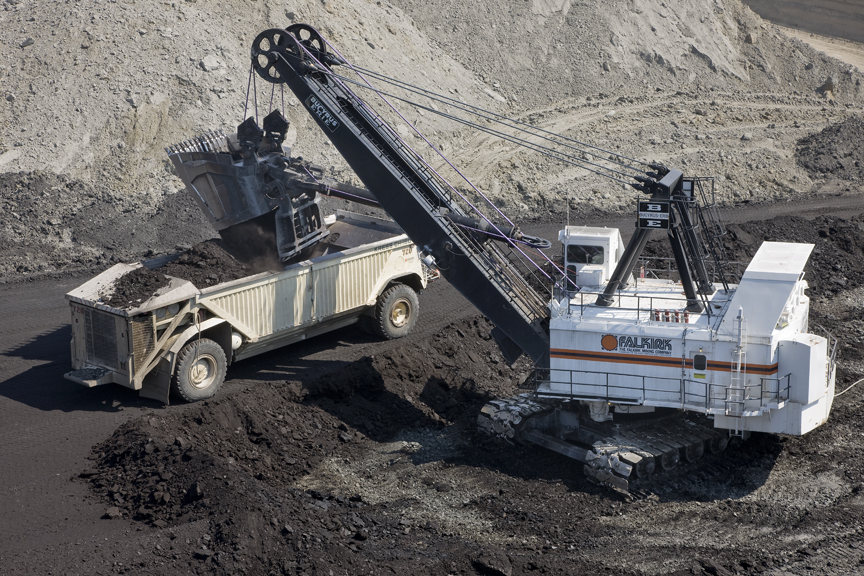North Dakota leaders are preparing for a legal battle with the federal government over a regulation they say could shut down the state’s coal industry. Dave Glatt, who leads North Dakota’s Division of Environmental Quality, called a pending federal regulation on mercury emissions a “death penalty for coal.”
The Environmental Protection Agency proposed lowering the standard for mercury emissions in April 2023. A finalized rule has yet to take effect but could be in place as soon as this month, Glatt said. EPA is proposing to tighten the emission limit for mercury for power plants that burn lignite coal, like those in North Dakota, by 70%. It says it will put the lignite plants in line with what other coal-fired power plants have been achieving under the current Mercury and Air Toxics Standards. The EPA, in a fact sheet on its website, said its analysis indicates the rule would have relatively minor impacts on the power sector, including small national increases in energy prices. U.S. electricity prices would increase by an average of less than 0.1% in 2028, 2030 and 2035.
But Glatt said in an interview EPA’s cost estimates are way off.
“Their science is wrong,” he said, adding that North Dakota’s lignite coal is different from coal in other states. That will make it more difficult for North Dakota’s coal-fired power plants to comply with the new rule.
Glatt said complying with the rule would be “extremely cost ineffective.”
The EPA would not confirm when a rule would be issued. But the agency said it received approximately 120,000 public comments on the proposal, which represents the most significant update since MATS was first issued in February 2012.
Preparing for War
During a Tuesday meeting of the North Dakota Industrial Commission where the rule was discussed, Attorney General Drew Wrigley said his office was gearing up for another legal battle with the EPA.
“We have to go to war in the courts against our federal government,” Wrigley said.
Jonathan Fortner, vice president of government relations and external affairs with the Lignite Energy Council, said in an interview he agreed with Glatt’s “death penalty” assessment.
Once a rule is implemented, the power plants would have three years to comply.
Fortner explained why North Dakota’s plants will have a more difficult time complying than plants in other states. The North Dakota plants are near the mines that supply them with lignite coal and that is the only kind of coal they use. Lignite has different chemical properties than other kinds of coal and the amount of mercury produced from burning lignite can vary.
Fortner said plants that burn lignite in other states blend it with other coal, making it easier to adjust.
If the power plants can’t comply with the rule, he said there would be fines. “It starts the plant down the road of being shut down,” he said. He said even if the state can convince a judge to put a hold on the rule while a legal battle plays out, it puts North Dakota’s coal industry in a difficult position. Companies that run the plants would have to decide if they should invest in the research to try to comply with the rule or just plan to shut the plant down if the rule stands, he said.
“So there’s a whole level of uncertainty and it’s not just about the plants,” Fortner said. “It’s about the people that work there. It’s about the mine and the people that work there. It’s about those communities.”
EPA projects that, under the proposed rule, about 500 megawatts of coal-fired capacity would retire by 2028.
North Dakota coal plants produce more than 2,264 megawatts, according to information presented to the Industrial Commission. North Dakota coal plants still provide much of the baseload electricity for the region. Gov. Doug Burgum, who chairs the Industrial Commission, said the new rule will drive up the price of power.
“You’re going to drive electricity up and they’re going to drive reliability down,” Burgum said.
Environmental View
Scott Skokos of the Dakota Resource Council, an environmental group, said the rule shouldn’t come as a surprise to the coal industry. The Mercury and Air Toxics Standards started under the Obama administration to reduce the health threats of mercury.
“These rules have been in the hopper for years,” Skokos said in an interview.
He said his group is supportive of the rule.
“We don’t need to be living like we did in the 1960s as far as environmental regulations, because from what I’ve seen from our Industrial Commission, that’s what they want,” Skokos said.
Glatt and Fortner said the coal industry has reduced the amount of pollution it produces over the decades since the birth of the EPA in the early 1970s and legislation such as the Clean Air Act. But they don’t see the new mercury standard providing measurable benefits to human health and the environment. Glatt told the Industrial Commission that the EPA is “trying to manufacture problems.”
“We’re all about environmental protection,” Glatt said. “Come to us with common sense regulation that will improve the environment, we’re all in. But come to us with laws and rules that really don’t make sense scientifically or legally. We’ve got a problem.”
Source: North Dakota Monitor









